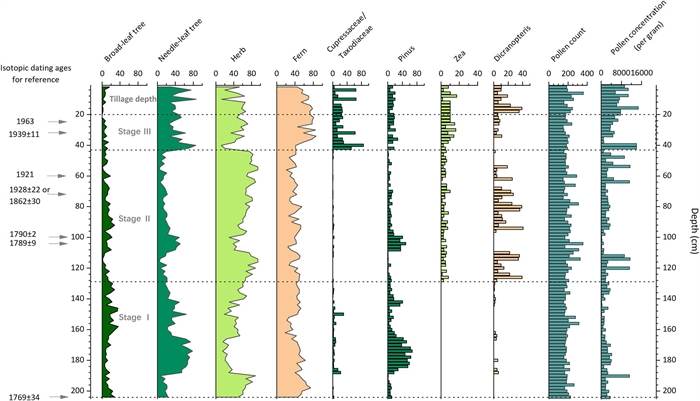New study Finds Maize Cultivation in History Resulted Karst Rock Desertification
Understanding regional vegetation dynamics and historical rocky desertification change is crucial to assess the sustainability and potential of afforestation in karst regions.
Researchers led by Prof. Kelin Wang from the Institute of Subtropical Agriculture (ISA), Chinese Academy of Sciences, has made progress in studying historical human disturbances and forest evolution in the karst region of southwest China, a typical region in the world suffering from rocky desertification and poverty.
In the recently study published in Earth's Future April 5, they found that maize cultivation and tree cutting three hundred years ago triggered severe rocky desertification in karst area Southwest China.
Scientists have developed a method for identifying historical human disturbances with karst depression sediments dating methods, including 137Cs, 210Pbex and charcoal 14C. The first-ever pollen record in karst depression sediment, combined with comprehensive dating methods and historical documents were presented (Fig.1).
According to the researchers, the forest evolution in southwest Guangxi is a three-stages of “virgin forest–deforestation–sparse tree planting” over the past three centuries (Fig.2). Probably, it used to be a lush mixed broadleaf-needleleaf forest at begainning. However, maize cultivation, along with explosive population growth and migration, accelerated mountain reclamation and deforestation, leading to severe rocky desertification around the 1780s. Sparse tree planting happend and icreased economic benefits since1930s.
Interestingly, they conclued that the introduction of maize, population growth, and migration accelerated mountain clearing and deforestation, leading to historical rocky desertification in the region, making it difficult for some karst areas to be forest landscape restoration.
"Previous studies on historical rocky desertification and human activities in karst areas were mainly relied on historical literature records." said Prof Yue Yuemin, corresponding auther of the stuy. "Our findings, for the first time, provide crucial scientific evidences and basis for establishing ecological restoration baselines and implementing precise afforestation and grassland restoration in karst regions."
The research were supported by the National Key R&D Program and the National Natural Science Foundation of China.

Figure 1. The pollen records in the sediment. Three stages were divided according to the critical pollen percentage variations. The isotopic dating ages are provided on the left for reference (Image by Yue Yuemin)

Figure 2. The forest evolution history over the past three centuries. (a) A diagram of tree covers and soil environments at three stages at our sampling site. (b) Forest area variations in Guangxi province during 1730–1970. (Image by Yue Yuemin)
Contact: Yue Yuemin
E-mail: ymyue@isa.ac.cn
Download attachments: